Have you ever looked at a world map and wondered about the quickest way to travel between continents? It might surprise you that for many long-haul flights, the answer lies directly over the top of the world – the North Pole. While it might seem like something out of a daring adventure novel, flying over the North Pole has become a routine part of modern aviation, often referred to as “Santa’s Shortcut” by those in the industry.
For today’s airliners, transpolar flights are a practical way to reduce both flight time and fuel consumption. However, this wasn’t always the case. The journey to making North Pole flights commonplace is a story of exploration, technological advancement, and overcoming significant challenges.
The Early Race to Conquer the Arctic Skies
The allure of the North Pole has captivated explorers for centuries, and aviators were no exception. In 1897, Salomon Andree, a Swedish engineer known for his impressive mustache and ambitious spirit, embarked on the first recorded attempt to reach the North Pole by air. He and his two crew members set off in a hydrogen balloon from Svalbard, a Norwegian archipelago in the Arctic Ocean. Tragically, their expedition took a turn for the worse just three days in when the balloon crashed on the polar ice around the 83rd parallel. The crew wandered the desolate ice for months before succumbing to the harsh conditions, their fate a somber reminder of the Arctic’s unforgiving nature.
Despite other unsuccessful attempts, the dream of Arctic aviation persisted. 1926 marked a turning point when Lieutenant Commander Richard Byrd of the U.S. Navy successfully flew over the North Pole in a Fokker Trimotor aircraft. Taking off from Svalbard, Byrd completed a round trip in 15 hours, achieving a landmark victory for aviation.
However, echoing the later Space Race, the Soviet Union was keen to assert its presence in Arctic aviation. In 1937, Valery Chkalov achieved the first true transpolar flight. Departing from Moscow, his plane landed in Vancouver, Washington, after an incredible 63 hours and nearly 5,500 miles, proving the feasibility of long-distance transpolar routes.
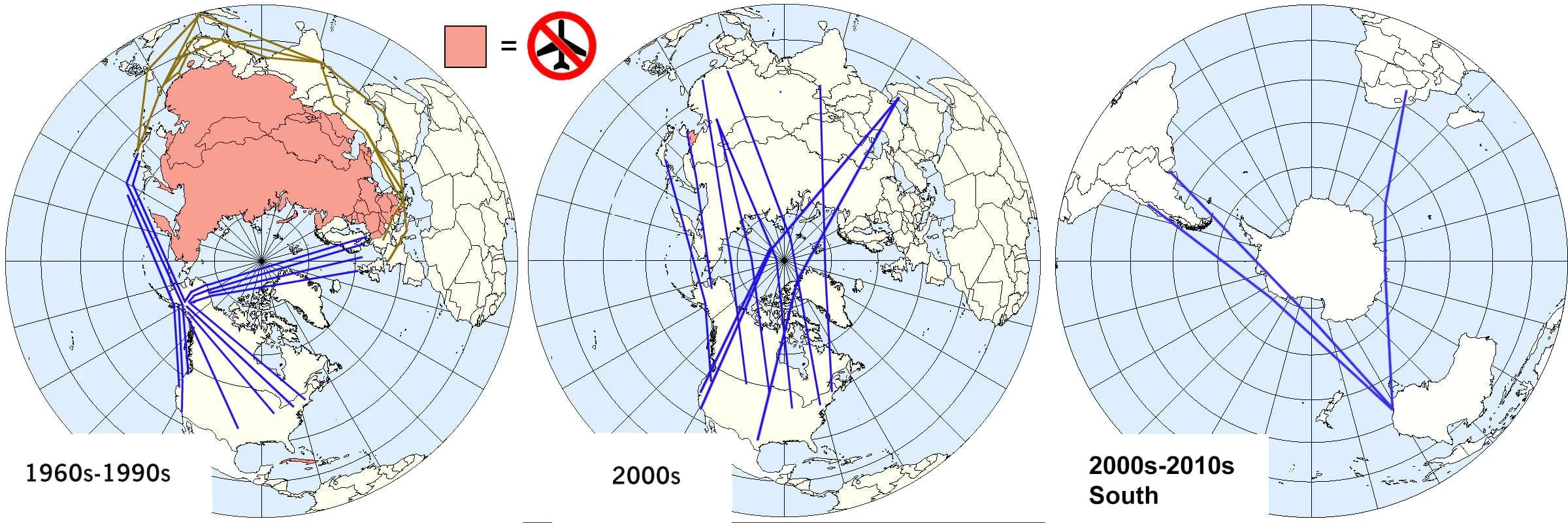 Vintage map showing transpolar flight routes
Vintage map showing transpolar flight routes
The Dawn of Commercial Transpolar Flights
Early polar flights were fraught with peril. Emergency landings were nearly impossible in the vast, icy wilderness, and navigation presented unique difficulties. The magnetic North Pole’s proximity to the geographic North Pole causes compasses to behave erratically, swinging unpredictably or even pointing south.
By the 1950s, advancements in navigation technology and more detailed Arctic maps began to pave the way for commercial possibilities. In 1952, Scandinavian Airlines System (SAS) conducted an experimental flight from Los Angeles to Copenhagen using a Douglas DC-6, venturing over the North Pole. Following approval from U.S. aviation authorities, SAS launched the first commercial transpolar route in 1954, regularly flying passengers between Los Angeles and Copenhagen via the Arctic.
 Historical image of a SAS transpolar flight route map
Historical image of a SAS transpolar flight route map
The Arctic Flight Revolution
Despite the pioneering efforts of SAS, flying over the North Pole remained relatively uncommon for many years. Restricted airspace over the Soviet Union during the Cold War limited flight paths. Furthermore, U.S. regulations initially restricted transpolar flights to aircraft with more than two engines, deeming twin-engine planes too risky for such remote routes.
However, aircraft technology continued to advance, and in 2011, the U.S. Federal Aviation Administration (FAA) relaxed its Extended-range Twin-engine Operational Performance Standards (ETOPS) regulations. This pivotal change allowed twin-engine aircraft to fly further from emergency landing airports, effectively opening up North Pole routes to a wider range of planes.
Flying over the North Pole offers significant advantages. For example, a flight between Hong Kong and New York can be shortened by approximately two hours by taking a polar route. Many passengers also find the experience more scenic. Pilots often descend to around 10,000 feet over the Arctic to prevent fuel from freezing in the extreme cold, offering breathtaking views of a landscape rarely seen by most people.
Interestingly, transpolar routes aren’t limited to flights between northern destinations. Emirates Airlines, for instance, utilizes a polar route for its 17-hour flight from Los Angeles to Dubai, showcasing the broad applicability of “Santa’s Shortcut.”
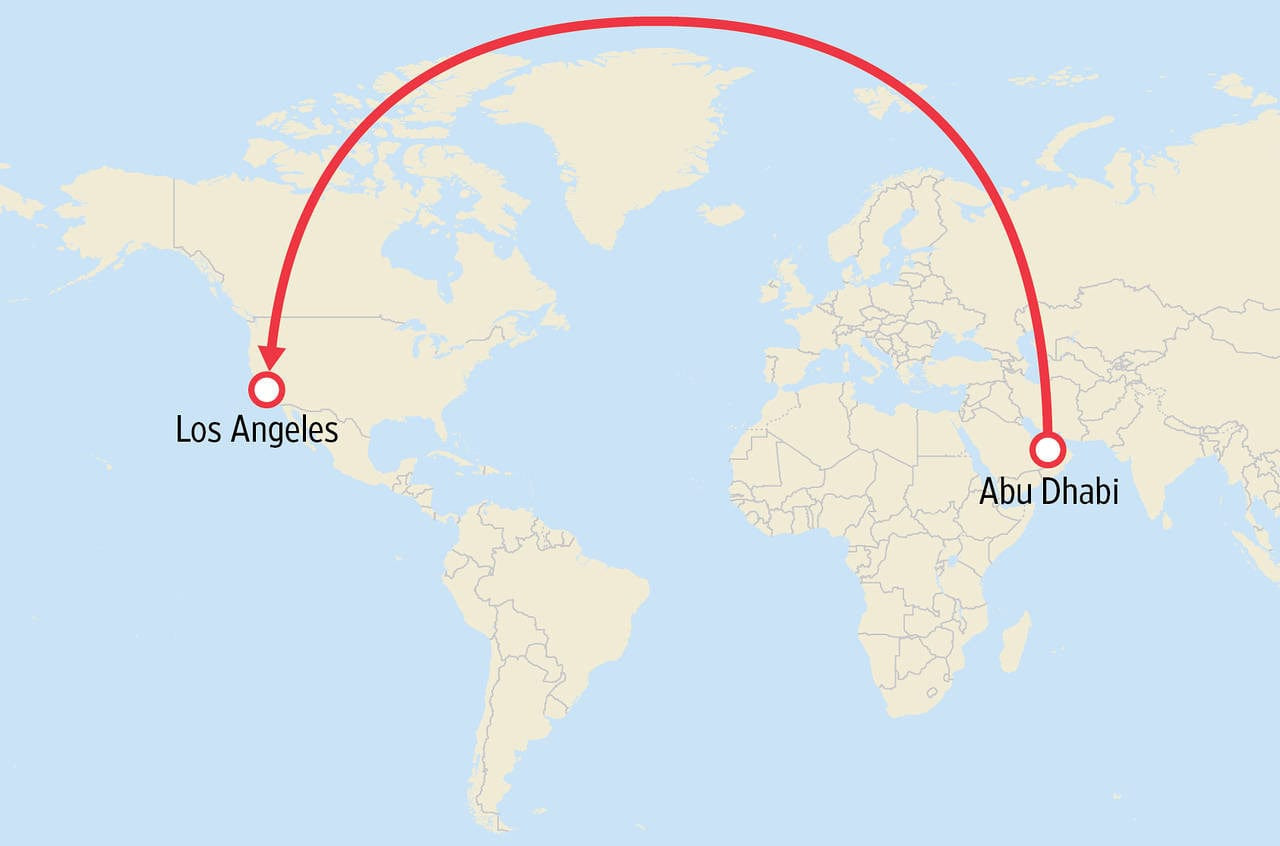 Modern airliner flying over Arctic landscape
Modern airliner flying over Arctic landscape
The Hidden Risk of Solar Radiation
While transpolar flights offer numerous benefits, there is one notable drawback: increased exposure to solar radiation. The Earth’s magnetic field typically deflects most solar radiation. However, at the poles, the magnetic field lines converge, creating a funnel effect that allows more solar radiation to penetrate the atmosphere.
Although a single polar flight doesn’t pose a significant radiation risk to passengers, the cumulative effect on flight crews who frequently fly these routes is a concern. Studies have shown that airline pilots can be exposed to higher levels of radiation than workers in nuclear power plants, highlighting the importance of ongoing monitoring and mitigation strategies for flight crew safety.
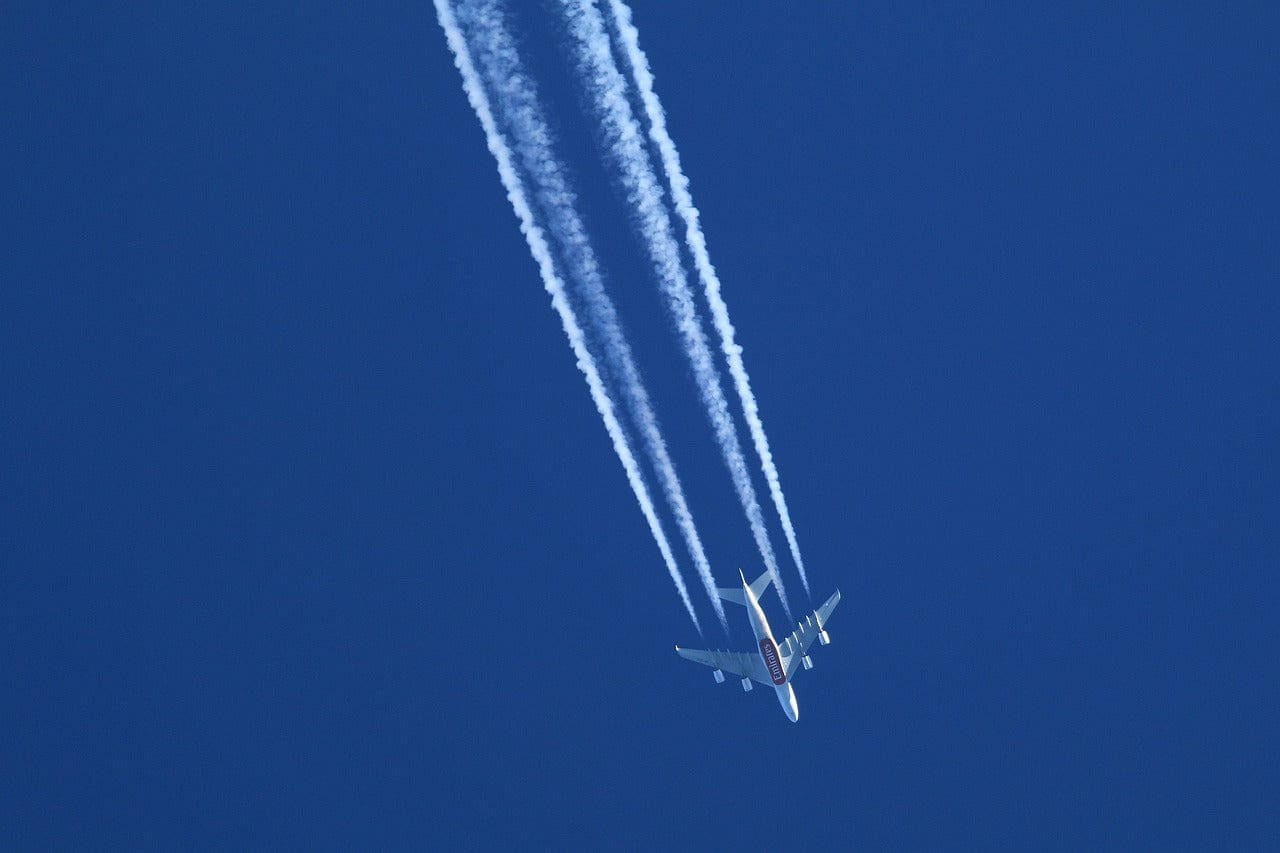 Diagram illustrating solar radiation at the poles
Diagram illustrating solar radiation at the poles
What About Flying Over Antarctica?
Just a few years after Byrd’s North Pole flight, in 1929, he also piloted the first flight to the South Pole and back, taking off from the Ross Ice Shelf. Later, in 1966, a crew circumnavigated both poles in a Boeing 707 jet, starting and ending in Honolulu and covering over 26,000 miles in 62.5 hours, including stops at various cities.
Despite these historic flights, commercial air traffic over Antarctica remains minimal.
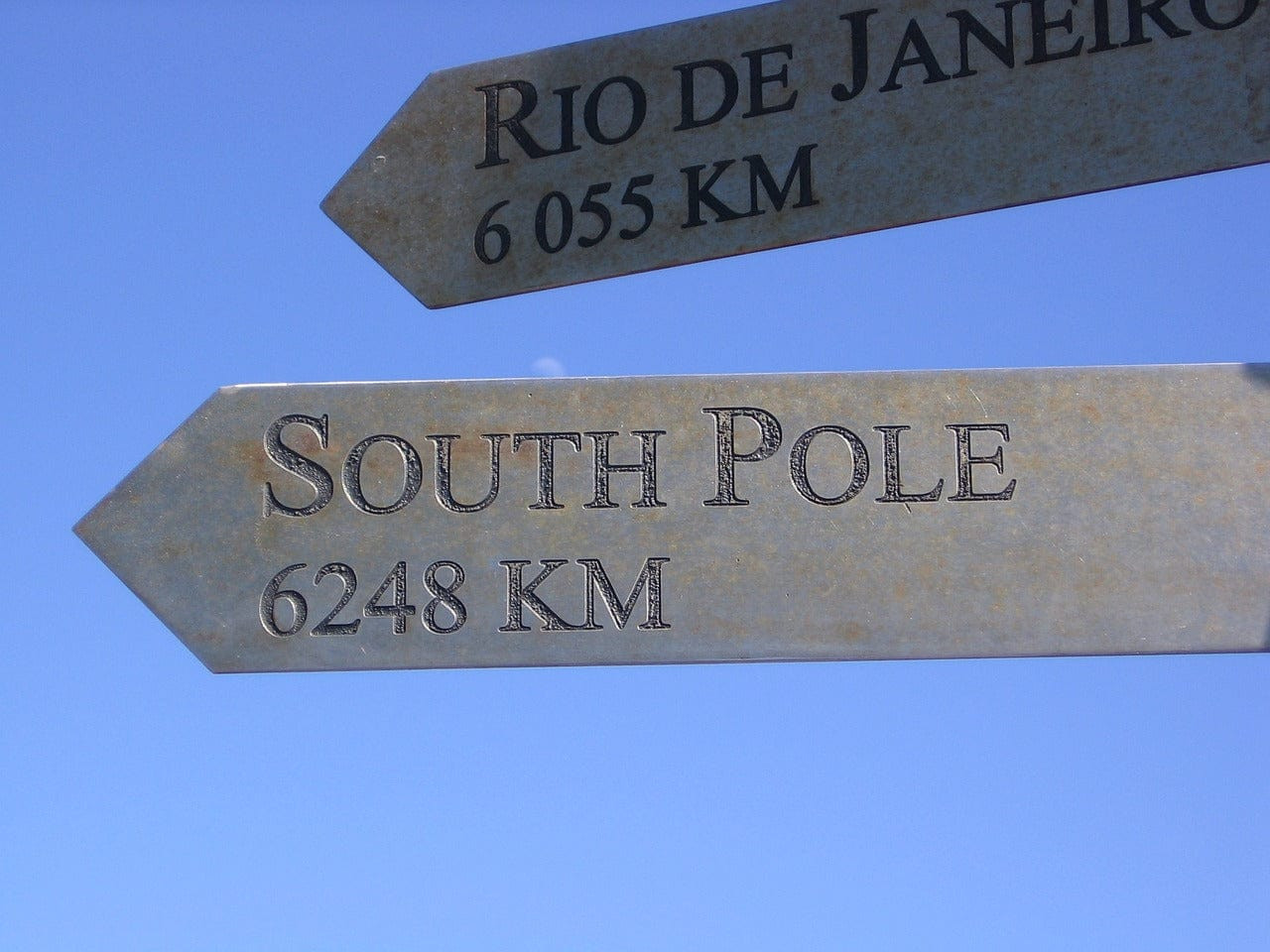 Map showing limited flight paths over Antarctica
Map showing limited flight paths over Antarctica
Why So Little Antarctic Air Traffic?
The primary reasons for the lack of Antarctic flights are lower demand and higher risks. The Southern Hemisphere is less populated with less landmass, leading to fewer long-haul flight routes compared to the Northern Hemisphere.
Beyond demand, Antarctica presents significant safety challenges. Diversion airports are scarce, and weather conditions are notoriously unpredictable and severe, even more so than in the Arctic. The tragic crash of Air New Zealand Flight 901 into Mount Erebus in 1979, resulting in 257 fatalities, underscored the dangers of Antarctic aviation.
While some private charter flights offer scenic tours over Antarctica, commercial airlines generally avoid the region due to the elevated risks and limited infrastructure.
Airspace Challenges in North and South America
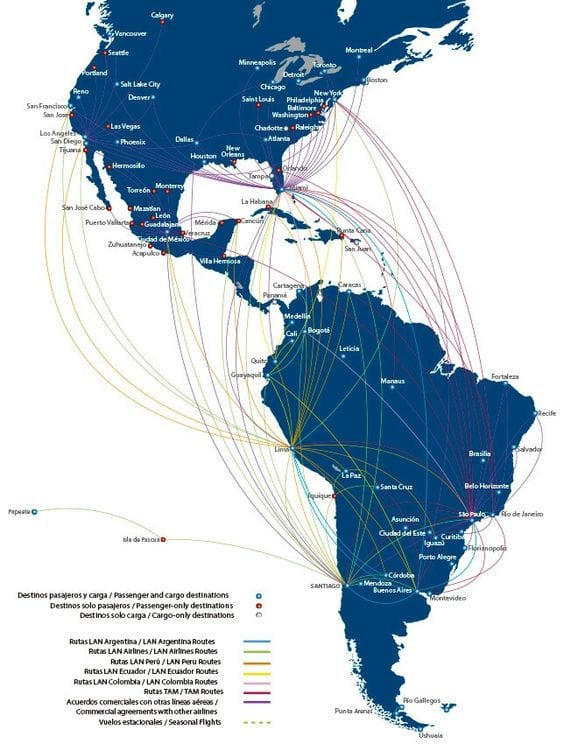 Map highlighting air traffic density over North America
Map highlighting air traffic density over North America
While North and South America might appear to be straightforward to navigate due to the abundance of airports, they present their own unique airspace challenges. The sheer volume of air traffic across these continents is immense. Furthermore, varying air safety regulations, particularly in parts of Latin America, can complicate flight planning. Limited availability of suitable diversion airports in certain areas also leads many airlines to opt for oceanic routes that run close enough to emergency landing options, rather than directly over land.
Polar Flight FAQs
Can planes fly over the North Pole?
Yes, planes routinely fly over the North Pole. Transpolar routes are common for flights between North America and Europe, and between North America and Asia, offering time and fuel savings.
Is flying over Antarctica illegal?
No, flying over Antarctica is not illegal. However, very few commercial airlines choose to do so due to safety concerns and lack of infrastructure.
Why don’t planes fly over the South Pole more often?
Antarctica’s extreme weather, scarcity of diversion airports, and lower demand for flights in the Southern Hemisphere make trans-Antarctic routes less practical and more risky for commercial aviation.

